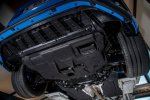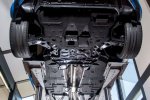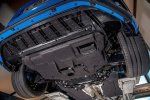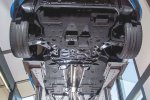I once read about an aerodynamic study of bricks. It was a school exercise in basic aerodynamics but kind of relevant to the shape of a hatchback.
So the example was a brick which had the front end ground in to a parabolic curve and in a wind tunnel it was marginally better than an unground brick.
Then the ground brick was turned 180° so the parabolic curve was to the rear and then it had significantly less drag than the other two examples (frontal area was identical in all examples).
The moral is that it almost doesn't matter what you do at the front as long as the flow behind is not creating a turbulent wake.
That means be as aggressive as possible with the splitter and making front end down force, the real place to clean it up is around the hatch.
That doesn't take ground effects in to account which is the other place to find improvement.
So just concentrate where air is coming out, not where it is going in.
So the example was a brick which had the front end ground in to a parabolic curve and in a wind tunnel it was marginally better than an unground brick.
Then the ground brick was turned 180° so the parabolic curve was to the rear and then it had significantly less drag than the other two examples (frontal area was identical in all examples).
The moral is that it almost doesn't matter what you do at the front as long as the flow behind is not creating a turbulent wake.
That means be as aggressive as possible with the splitter and making front end down force, the real place to clean it up is around the hatch.
That doesn't take ground effects in to account which is the other place to find improvement.
So just concentrate where air is coming out, not where it is going in.













